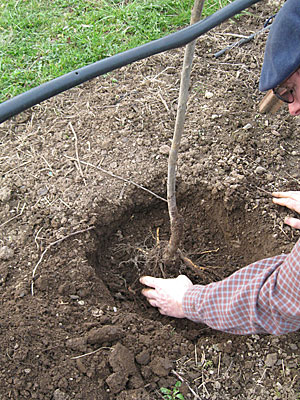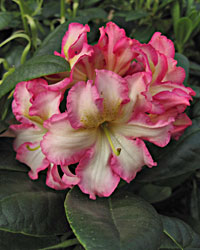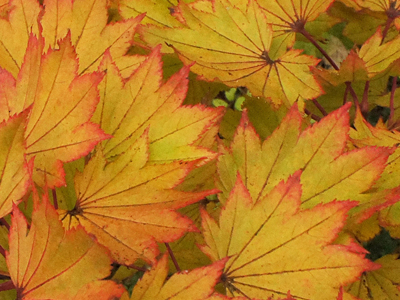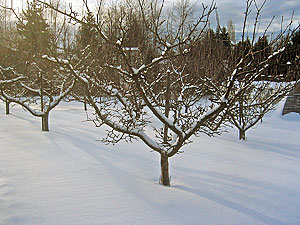I wanted to expand on my last post about summer planting. A more general question we get in the nursery at Cloud Mountain is “when is the best time to plant?”
In our maritime climate, you can plant almost any time of year. But as I discussed in the last post, summer planting means more attention to watering, whereas planting in early spring or fall can mean cool, moist soil which helps those roots to establish. Let’s look at each season, pros and cons.

Planting bare root
Early Spring
In our climate, early spring includes February-late April. This is typically a cool and wet time of year, but we rarely get extremely cold or warm during this season. If you look at high and low temperature averages for Bellingham, you can see this trend.
- Pros of early spring planting:
- Cool, mild temperatures on average
- Nurseries have the best selection this time of year- this is when field grown plants are most available, including bare root fruit trees, dormant berry canes and strawberry plants.
- Bare root plants are easy to plant
- Watering is only necessary to settle the soil in the planting hole, or during unusually dry weather
- Cons of early spring planting:
- Soil may be too wet to plant
- Can be unpleasant weather for gardening
Late Spring/Early Summer

Rhododendron Melrose Flash
May and June can also be good for planting here in the Northwest. This is the tail end of our very long spring.
- Pros of late spring planting:
- Nice outside, pleasant to garden
- Can see the blooms if buying flowering ornamental plants
- Can see the foliage of deciduous ornamental plants
- Still a good selection of fruit plants
- Soil still has moisture
- Soil is dry enough to work
- Cons of late spring planting:
- Plants are no longer bare root, take more effort to plant
- Some varieties are sold out
- You may need to water more to establish the roots
Summer Planting
Planting in July and August, warm outside and typically dry weather. This was discussed in the last blog post, but in brief-
- Pros of summer planting
- You have long daylight hours, and it’s nice outside
- The soil is not wet
- You may still be able to find the plants you want
- Planting broad leaved evergreens and conifers now lessens the risk of fall and winter damage
- Cons of summer planting
- You have to water to keep the soil moist for root establishment
- You worry about too much heat stressing non-established plants

Fall color on maple
Fall Planting
September through mid-November is a great time to plant
- Pros of fall planting
- The weather is cooler and often pleasant to work outside
- Most soil is very workable, and not too wet
- Less water is needed to establish plants as fall rains begin
- You can shop for fall foliage interest in the garden
- Deciduous material is going dormant, so can be planted very late
- You can often find good sale prices
- Cons of fall planting
- Selection is lowest of the season
- You still need to water if fall rains start late
- Late planted broad leaved evergreens and conifers risk winter damage if we have a cold winter- their foliage transpires moisture that can cause leaf or needle burn if roots are not established

Snowy orchard
Winter Planting
Winter- mid-November through late January- is typically our coldest and wettest season. This is the most likely time to have snow on the ground, and also the most likely time for us to have a ‘Northeaster’, those cold outflow winds that make Whatcom County notoriously colder than much of Western Washington. You can still plant deciduous dormant trees and shrubs, but your soil may be too wet to work. If you choose to plant evergreens during this period, you may risk some leaf burn if cold weather happens. But we can have mild, dry weather during these months, too, so if you find a plant this time of year, you can still plant it.
One of the joys of living in the Pacific Northwest is our climate. Take advantage of it and don’t feel you missed out planting at the “right time”. Given a little thought and timing, the best time to plant is when it works for you!

